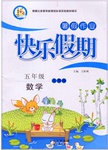题目内容
阅读理解
What is your favourite colour? Do you like yellow, orange, red? If you do, you must be an optimist (乐观主义者), a leader, an active person who enjoys life, people and excitement. Do you prefer greys and blues? Then you are probably quiet, shy, and you would rather follow than lead. You must be a pessimist. At least, this is what scientists tell us, and they should know, because they have been seriously studying the meaning of colour preference (爱好), as well as the effect that colours have on human beings. They tell us, among other facts, that we do not choose our favourite colour as we grow up-we are born with our preference. If you happen to love brown, you did so, as soon as you opened your eyes, or at least as soon as you could see clearly.
Colours do affect us. There is no doubt about it. A yellow room makes most people feel happier and more relaxed than a dark green one; and a red dress brings warmth and cheer to the saddest winter day. On the other hand, black can cause people sad. A black bridge over the Thames River, near London, used to be the place of more suicides (自杀) than any other bridge in the area-until it was repainted green. The number of suicides immediately fell sharply; perhaps it would have fallen even more if the bridge had been done in pink or blue.
Light and bright colours make people not only happier but more active. It is a fact that factory workers work better, harder, and have fewer accidents when their machines are painted orange rather than black or grey.
1.“You would rather follow than lead” means ________.
[ ]
A.you don't like to follow others
B.you would be a member rather than a leader
C.you would be afraid of following others
D.you would like to be a leader rather than a follower
2.If one enjoys life, one is sure to prefer ________.
[ ]
3.“They tell us, among other facts, that we don't choose our favourite colours as we grow up.” “Among other facts” means ________.
[ ]
4.Which of the following is true?
[ ]
A.People's preference of one colour to another is born with them.
B.People's preference of one colour to another is got as they grow up.
C.More people happen to love brown because they saw something brown when they were born.
D.Colours have little effect on us.
5.Those who killed themselves preferred the bridge over the Thames River near London to others because of ________.
[ ]

 一诺书业暑假作业快乐假期云南美术出版社系列答案
一诺书业暑假作业快乐假期云南美术出版社系列答案
| |||||||||||||||||||||||||||||||||||||||||||||||||||||||||||